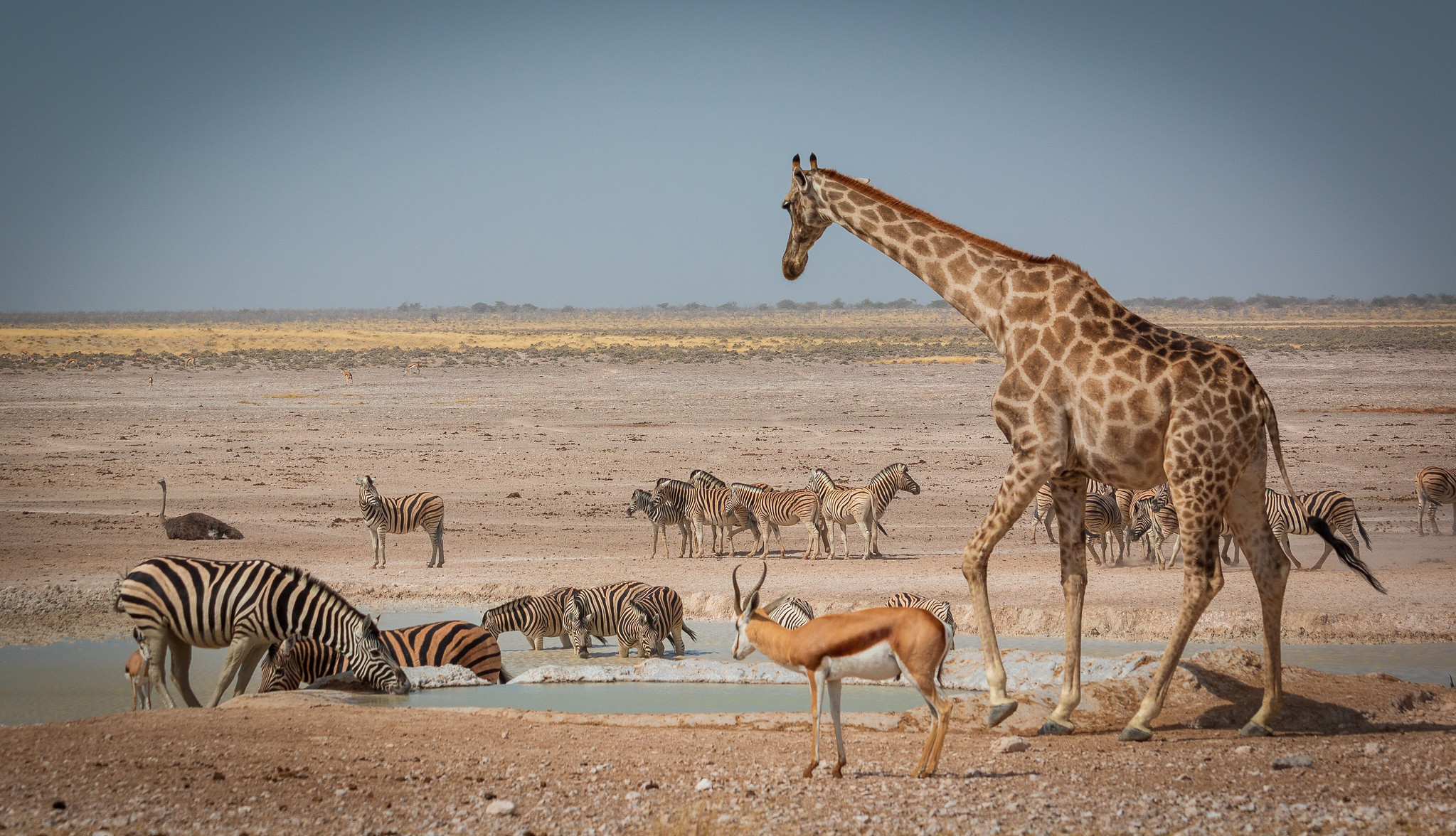Last winter, two renowned conservationists from Namibia—Garth Owen-Smith and Dr. Margaret Jacobsohn—came to Montana and offered a perspective that left some Americans believing they were speaking heresy.
The message: Public wildlife in southwestern Africa was rescued from the brink of decimation by removing federal controls over animal and plant management and ceding it over to the authority of local tribal entities.
Achieved through the creation of “communal conservancies,” the bold strategy, endorsed even by World Wildlife Fund, allows rural communities adjacent to federal protected areas to more directly capitalize on wildlife by selling lucrative sport hunts, partnering with ecotourism companies that cater to non-consumptive viewing of animals, and permitting harvest for purposes of daily subsistence.
As Jacobsohn told an audience at the Museum of the Rockies in Bozeman, unless people who coexist with animals every day regard them as valuable assets, not liabilities, the survival of wildlife will always be in jeopardy.
For many in the Greater Yellowstone Ecosystem accustomed to seeing conservation victories achieved only through strict federal regulation and government agencies forcefully playing a role in stewardship, it seemed counterintuitive.
A decade earlier, Christopher Joyce, a reporter with National Public Radio, traveled to Namibia and looked into the pioneering paradigm Owen-Smith and Jacobsohn were instrumental in bringing to Namibia called Integrated Rural Development and Nature Conservation. Joyce interviewed a cattle herder named Elias Neftali who for years had battled lions, cheetahs, and other predators preying on his livestock. He realized that he and his neighbors could prosper more by carefully monetizing wildlife.
“There are others like Neftali, people who have left raising livestock to participate in a radical experiment in Namibia: helping wildlife survive by putting their fate in the hands of the people who share their lands,” Joyce observed. “It’s as though the U.S. government said to the people who live around Yellowstone National Park, ‘You know what? All those wild animals in the park—the grizzlies, the bison, the wolves—they belong to you.’”
Now, decades into the program, the arrangement is far from perfect and is highly controversial for some, but the statistics speak for themselves, Owen-Smith said.
Elephant numbers have risen in Namibia from about 7,500 in 1995 to an estimated 23,000 in 2018. Today, Namibia is also home to the largest free-ranging numbers of critically endangered black rhino, which in 1980 were on the verge of extinction in the wild. Rhinos are under constant threat by poachers, yet when they are regarded as village assets, their gauntlet of homegrown game-guard protectors has proven to be more effective than just relying on government rangers.
Namibia became a country in 1990. It is, like all nations located in the wildlife-rich southern horn of Africa, reeling from the after effects of European colonization, which resulted in political boundaries and jurisdictions of nation states that do not conform to original tribal homelands.
“In the 1970s, the plague of poaching became an epidemic, and by the 1980s there was very little wildlife left,” Owen-Smith says.
Namibian community conservation has produced “the greatest modern conservation story in Africa,” some observers say. While systems of federal protected areas have arisen to safeguard iconic species, local communities situated adjacent to parks often did not reap the benefits of international ecotourism dollars flowing into the region.
Over the past 25 years, nearly 100 communal conservancies have sprung up, bringing a different way of approaching conservation to nearly a quarter of Namibia’s land mass and making rural people stakeholders.
In 1982, populations of oryx, springboks, and zebras were reduced to a few hundred in the Kunene region—home to the Himba ethnic group and herding culture. Today, oryx number in the tens of thousands, springboks in non-drought years at upwards of 200,000, and zebras at more than 15,000. In turn, they support healthier populations of lions, leopards, and cheetahs.
Mike Sutton today oversees the Goldman Environmental Prize—considered the Nobel of global wildlife conservation—which was awarded to Owen-Smith and Jacobson in 1993. Sutton previously worked in Africa as a senior strategist for World Wildlife Fund, worked on anti-poaching investigations for the U.S. Fish and Wildlife Service, and served on the California Fish and Game Commission.
He knows that trophy hunting is increasingly a controversial topic, with western animal rights activists condemning it as immoral and anachronistic in the 21st century. However, Sutton says, under the community conservation model in Namibia, it’s generated millions of dollars for local economies and provided incentives for locals to protect wildlife.
“Without trophy hunting there would be no wildlife. But trophy hunting is just one of several different ways to put a financial value on wildlife in areas where photo-tourism is insufficient to make a difference,” Owen-Smith told me.
Tourism needs to generate income for people who live with or near wildlife, and importantly, to cover the costs of living with wild animals, Owen-Smith said. “What wild animals need most of all is land. In some instances, in several parts of Africa, trophy hunting is all that prevents wild habitat from being used for farming or mining,” he noted. “So yes, at this stage we need trophy hunting. Wildlife has to be valuable to rural people, not just financially, but also socially and culturally.”
Owen-Smith and Jacobsohn refrained from weighing into the topic of whether Greater Yellowstone grizzly bears should be sport hunted once they are removed from federal protection.
With non-consumptive wildlife viewing of bruins and wolves in Yellowstone and Grand Teton national parks contributing to an estimated $1.3 billion in annual nature-tourism revenue for the region, he believes Greater Yellowstone is leading the way in showing that those species are worth more alive than dead.
Still, on the private lands surrounding the park, the challenge remains how to promote habitat protection for elk, deer, pronghorn, and other species and to engender tolerance for bears and wolves.
What Owen-Smith, Jacobsohn, and others have done is forced proponents of conventional wildlife protection and the North American Model of Wildlife Conservation to broaden their thinking, Sutton says. “The United States may have given the world the idea of national parks like Yellowstone,” Sutton noted. “But what Garth and Margie fostered in Namibia has since been carried out all over the world and is sorely needed in rural America today—that is landowners realizing economic benefits and being rewarded when environmental stewardship is carried out.”




